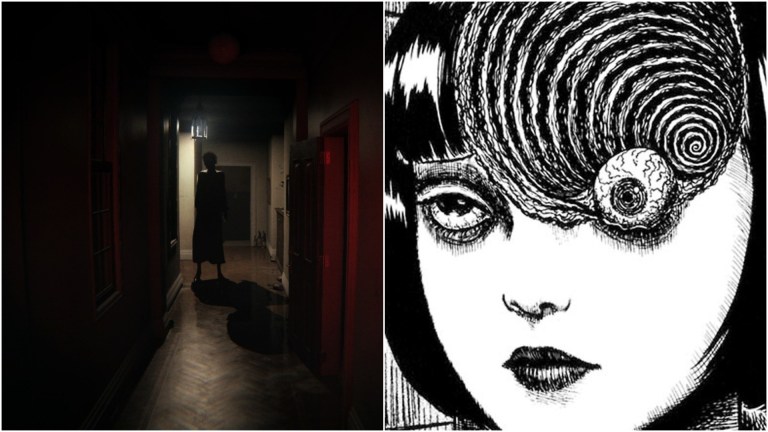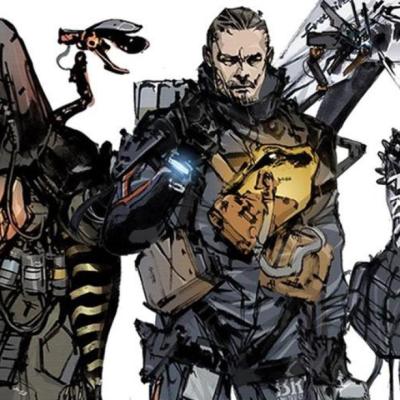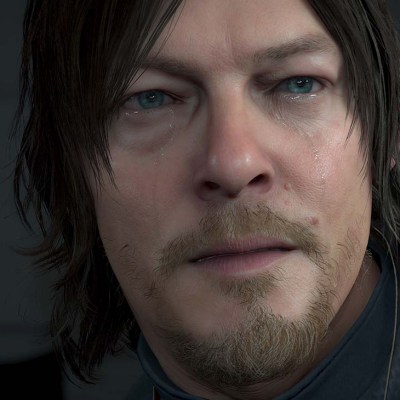How Hideo Kojima and Junji Ito Could Finish What Silent Hills Started
Hideo Kojima, Guillermo del Toro, and Junji Ito had big plans for a horror game that never happened.

The collaboration survival horror fans have been waiting for may finally be happening, according to famed mangaka Junji Ito, who confirmed that he’s been talking to video game auteur Hideo Kojima about working together on a new horror project, which has been the subject of much speculation since the release of Death Stranding last year.
Ito shared this tidbit while talking to Viz Media during this weekend’s Comic-Con@Home event, where he was asked whether he was currently working on any video game projects.
“So, the simple answer is no,” Ito’s translator Junko Goda told Viz Media. “However, I do know director Kojima and we have been in conversation that he might have a horror-based game that he may be doing, and so he has invited me to work on that, but there are no details on it yet.”
The mangaka later walked back his remark a bit, saying the conversation was casual and happened at a party.
“I said casually that I received an offer from Mr. Kojima, but in reality, it was a remark made at a party where he said, ‘If there is an opportunity, I may ask for your help.’ I apologize to Mr. Kojima and all of the fans to whom I may have given false hope,” Ito wrote on Twitter (via IGN).
Regardless of how serious Kojima and Ito’s conversation was, the possibility of the two creators working together has lit the internet on fire with speculation. Those who have been following Kojima’s attempts to make a horror game over the years likely know that Ito was previously set to collaborate with the video game auteur and filmmaker Guillermo del Toro on Silent Hills, a new take on the beloved survival horror series starring The Walking Dead and Death Stranding actor Norman Reedus. But the collaboration never got past a few initial meetings and a karaoke session.
“Once the Silent Hills meeting was over, we went to karaoke,” Ito said while speaking at the Toronto Comics Art Festival (via Game Informer) in 2019. “I didn’t hear anything after that. I heard that the plan got scrapped through outside sources. I have seen Kojima and Del Toro since. I never started designing monsters. Nothing exists. There are no roughs or sketches.”
In an interview with IGN about approaching Ito to work on Silent Hills, del Toro called the mangaka “completely one of the masters,” saying that he loved how Ito seemed to “get high on his own supply” while imagining the grotesque monsters, body horror, and extreme violence that are trademarks of the mangaka’s work.
“In the way that you feel Dario Argento in the early movies was getting off on each murder or you feel David Cronenberg was secretly aroused by body horror – in the same way, you feel Junji Ito being titillated at a very basic disturbing level by his stuff,” del Toro said of Ito.
However Silent Hills would have turned out, it does sound like the trio had some interesting new ideas about how to push the survival horror genre forward.
“We had a few working sessions where we were talking about using the console, the next-generation console in a way that would surprise people. Let’s really freak out people. Let’s really cause a panic with Silent Hill. Let’s go for it. Let’s go for full-blown social madness,” del Toro told IGN. “We were planning this stuff. Ito was mainly being nice, making notes. He didn’t sing either. He was a very serious man.”
Unfortunately, when Kojima and publisher Konami had a falling out during the development of Metal Gear Solid V: The Phantom Pain, the game director left the company and Silent Hills was quickly canceled. Konami has done little with the series since (besides making Silent Hill-themed pachinko gambling machines).
It’s a shame this all happened before Ito could even put pencil to paper. I personally would have loved to see what monstrosities Ito’s chats with Kojima and del Toro might have inspired. Fortunately, Kojima and del Toro’s P.T. demo was a stunning proof of concept for what Silent Hills might have looked like. It was also its own experiment in “social madness.”
When P.T. was mysteriously released at Gamescom 2014 by a fake studio, many gamers quickly became obsessed with solving the confounding (and terrifying) demo’s seemingly nonsensical puzzles. Within hours, P.T. had become a viral marketing phenomenon, the subject of countless reaction videos, forum threads, walkthroughs, live streams, and social media posts. Of course, beating the demo revealed P.T.‘s biggest mystery of all: that it was, in fact, a “playable teaser” for Kojima and del Toro’s Silent Hills. Yet, by the time the truth had come out, P.T. itself had morphed into its own unique experience destined to outlive the game it was created to promote.
Much has been written about the making of P.T. and its influence on the horror genre in the years since its release. You can also find plenty of videos dissecting different aspects of the demo, including videos of players, dataminers, and modders trying to figure out how the demo works. Siux years later, certain things about the demo remain a secret, including the meaning of its cyclical narrative.
The demo is a notable example of a game going viral, as players worked together on Reddit and streaming platforms to solve P.T.‘s puzzles, while word of mouth on social media got others to try the demo. While Kojima explored this idea further in Death Stranding, which has its own social mechanics, del Toro and Kojima originally planned to take all of this one step further with Silent Hills, using “every aspect” of the PS4 to “create a state of widespread social panic,” according to IGN. While I’d stop short of saying it caused widespread panic, P.T. itself did spread like wildfire through internet gaming communities in 2014 like some sort of interactive urban myth or creepypasta. Or a meme.
Fans of the Metal Gear series know Kojima loves to insert metafiction and other metaphysical elements into his work, such as with the Psycho Mantis boss fight in Metal Gear Solid and the final twist in Metal Gear Solid 2, which some believe predicted the pervasive nature of meme culture on the internet as well as how technology could be used for social engineering. Many of Kojima’s games specifically tackle how technology can distort and corrupt reality.
P.T. has its own distortive qualities and can even be considered a major turning point in Kojima’s work undoubtedly influenced by del Toro’s own directorial sense. Some critics have said the demo’s endlessly looping hallway, which players must keep walking through to solve P.T.‘s many puzzles, “practically hypnotizes you into a state of vulnerability.” That sense of vulnerability also comes in part from the hostile ghost that follows closely behind you throughout the experience as well as the disorienting nature of the puzzles that work on a sort of dream logic that’s never explained within the actual game. (There are no tutorials or in-game prompts to be found in P.T.)
Kojima told The Japan Times in 2014 that with P.T. he wanted to explore “a more genuine, thoughtful and permeating type of fear” than the violence and gore usually found in AAA survival horror games.
“There are horror action games with zombies and grotesque things and so forth. The real fear isn’t from those things. It’s from standing in an empty place, where just to step forward or to turn around is scary,” Kojima said, explaining that the demo is scary because “there’s no information.”
“Nowadays, when people don’t know something, they Google it. They ask on Twitter or Facebook and they get the answer right away. We live in an age of information. When that suddenly disappears, that’s the scariest thing,” Kojima explained. “That’s why there was no information about who made P.T. There was no purpose or background and no explanation about the story, and that’s frightening. I did this on purpose. That’s why I hid my name and title and just let them play.”
While Kojima has said many times since the release of P.T. that the demo wasn’t actually related to Silent Hills in terms of gameplay or story, it’s impossible not to wonder how the success of the interactive teaser would have influenced Kojima and del Toro’s final product, and how Ito’s own work would have added to the experience.
After all, Ito was a perfect fit for the “social madness” Kojima and del Toro were going for with Silent Hills. In his seminal horror manga books Gyo and Uzumaki in particular, Ito deals with extreme levels of social anxiety and the unbridled chaos that follows.
In Gyo, Japan is plagued by undead fish who crawl out of the sea using spider-like metal legs powered by a “death stench.” Images of bloated victims assimilated into the killer fish army pervade the pages of the book as do images of mass hysteria.
If Gyo is Ito’s own take on the zombie genre, Uzumaki is something far more experimental and disturbing. In Uzumaki, a small Japanese town finds itself under attack by a supernatural curse involving spirals. The book is infused with a heightened sense of paranoia, as characters try to navigate the horrific dream logic that’s not unlike the one found in P.T.
Interestingly enough, Ito was inspired to create Uzumaki in part due to his desire to understand spirals as symbols, as well as an interest in depicting spirals in an unexpected way that would scare Japanese audiences, an approach that sounds like Kojima’s own distortion of gameplay mechanics players normally take for granted.
“The ‘spiral pattern’ is not normally associated with horror fiction. Usually spiral patterns mark character’s cheeks in Japanese comedy cartoons, representing an effect of warmth. However, I thought it could be used in horror if I drew it a different way,” Ito said in an interview with 78 magazine in 2006. “Spirals are one of the popular Japanese patterns from long ago, but I don’t know what the symbol represents. I think spirals might be symbolic of infinity.”
While Ito’s work is full of the violence and gore that Kojima wanted to move away from with P.T., it’s clear that the two creators share similar sensibilities when it comes to finding more primal ways of scaring their audiences. Like Kojima and his use of the suburban hallway, Ito often uses images of things that aren’t traditionally considered scary — like spirals — in order to terrify. Another example is hair.
“Historically, long black hair has been symbolic of Japanese women, and most women value this image. The long hair of a woman is common in Japanese horror because it conveys an enveloping feeling of movement. I think it conjures up fear in people unconsciously,” Ito told 78.
It’s in this space between what we know to be scary and what people don’t even know they’re scared of yet that both Ito and Kojima excel. With Kojima now running his own Kojima Productions indie studio where he can decide what he wants to work on and with whom he wants to work with next, his collaboration with Ito might finally come into fruition on their own terms. And their past work certainly points to a match made in hell.
If Kojima and Ito do decide to collaborate on a new horror game, one would have to wonder how del Toro might fit into the project. After Silent Hills was canceled and a previous video game project called Insane also fell through, del Toro vowed to never work on a game again during an interview with Playboy (via IGN). That said, del Toro did allow Kojima to use his likeness for a major supporting character in Death Stranding, so perhaps there’s hope the Silent Hills trio could be reunited one day.
Until then, our hopes of seeing something akin to what was planned for Silent Hills rest with Kojima and Ito. Perhaps Kojima could even teach Ito a thing or two about video games along the way: “I don’t know anything about games. I don’t play them. I am afraid if I get into them I’ll miss deadlines. I have never played Silent Hill,” Ito revealed at the Toronto Comics Art Festival while ruminating on his relationship with Kojima. “I have known Hideo Kojima for 20 years. He is a nice older brother type.”


